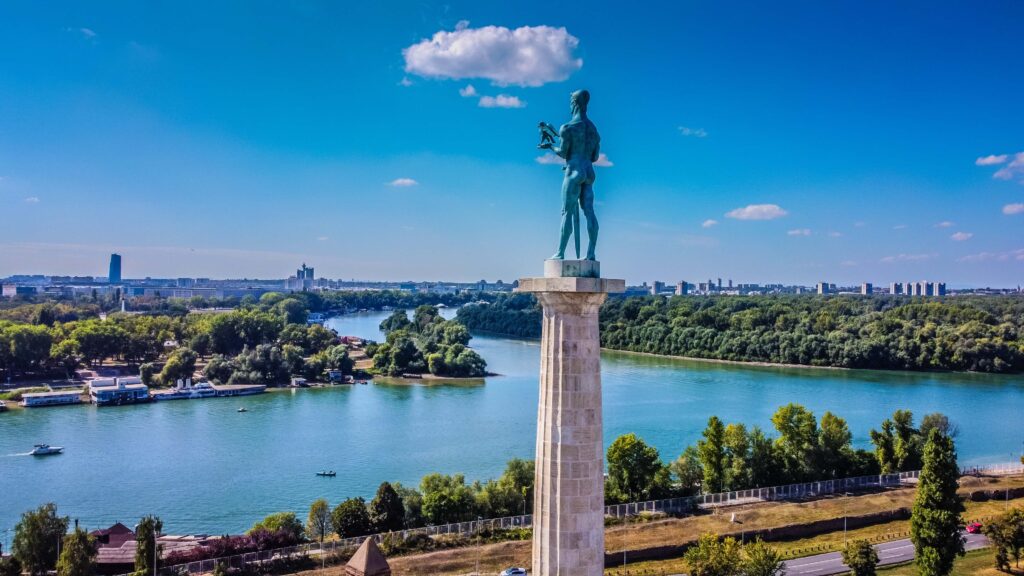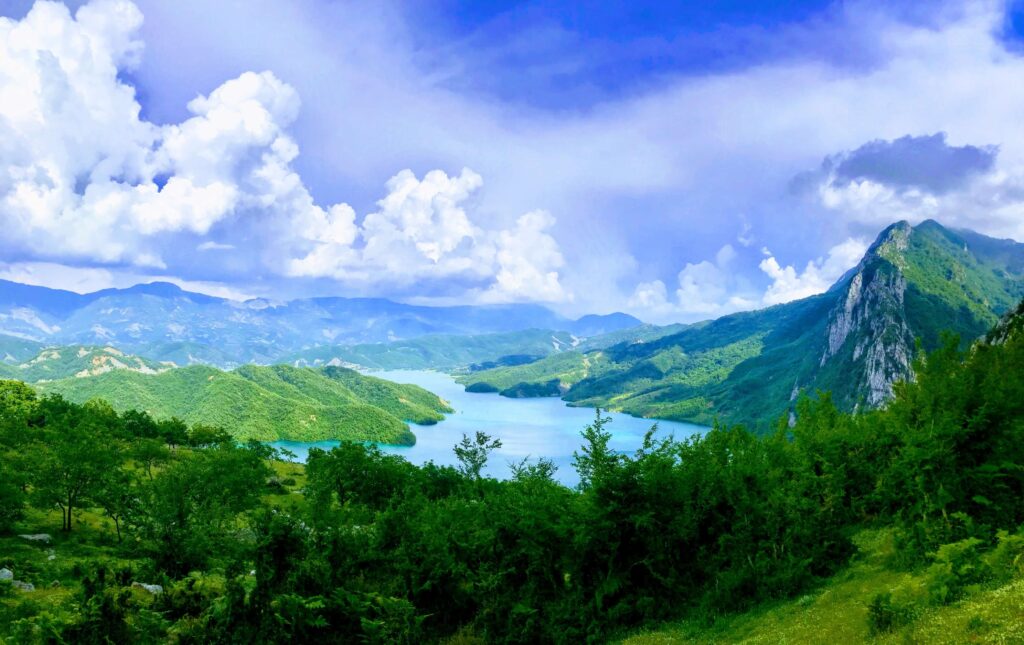Neuschwanstein Castle, one of the most popular German castles, is a breathtaking architectural marvel in the heart of Bavaria. This enchanting castle, often referred to as the “fairytale castle,” is perched on a rugged hilltop, offering panoramic views of the surrounding alpine landscape. The castle’s elegant spires and turrets, coupled with its rich history and picturesque setting, have captivated the hearts of millions of visitors from around the world.
Keep reading for all the most important information. We’ll go into the castle’s history, when to go and how to get there, as well as tours and activities in the surrounding areas.
*This post contains affiliate links, which are included to provide easy access to products or services we genuinely recommend. We may make a small commission if you make a purchase or booking through one of these links. This comes at no extra cost to you, but helps to sustain our site and create more valuable content.*
History and Construction of Neuschwanstein
Commissioned by King Ludwig II of Bavaria, Neuschwanstein Castle was built as a personal refuge for the reclusive monarch. Neuschwanstein is actually one of three castles commissioned by the famous monarch, the other two being Linderhof and Herrenchiemsee Palace.
The initial designs of Neuschwanstein were made by Christian Jank, before construction began in 1869 under the direction of the architect Eduard Riedel. Later, after Riedel’s departure, it was overseen by Georg von Dollmann and Julius Hofmann.
The castle’s design was heavily influenced by the romantic ideals of the time. It drew inspiration from the operas of Richard Wagner (of whom the Kind had been a lifelong patron) as well as medieval legends of knights and chivalry.
The construction of Neuschwanstein Castle was an ambitious undertaking, employing advanced building techniques of the era. Additionally, the castle’s interior was adorned with lavish decorations, including elaborate frescoes depicting scenes from Wagnerian operas and Germanic myths.
Despite the castle’s opulence, King Ludwig II only lived there for 172 days before his untimely death in 1886. Completion was delayed due to the king’s passing, yet just seven weeks later it was opened to the public. It garnered immediate acclaim for its architectural splendour, although even today only fourteen rooms are fully finished and open to the public.
Neuschwanstein’s Influence on Pop Culture
Neuschwanstein Castle’s timeless beauty and fairytale-like ambiance have left an indelible mark on popular culture. Walt Disney, inspired by the castle’s enchanting allure, incorporated its distinctive features into the design of the iconic Sleeping Beauty Castle at Disneyland.
The influence of Neuschwanstein can be seen in numerous other Disney productions, further cementing the castle’s status as a symbol of romance and fantasy.
In addition to its impact on Disney, Neuschwanstein Castle gained widespread recognition from its appearance in the beloved film “Chitty Chitty Bang Bang.” The castle’s majestic silhouette and idyllic setting served as the backdrop for key scenes in the film, captivating audiences and reinforcing its status as a cultural icon.
More recently, Neuschwanstein has served as a filming location for popular films such as The Great Escape and The Monuments Men. It has also featured in films about King Ludwig II, such as Mad Emperor: Ludwig II and the documentary The Fairytale Castles of King Ludwig II with Dan Cruickshank.

Neuschwanstein Castle Tours and Opening Hours
Guided tours offer visitors the opportunity to explore the castle’s opulent interiors and fascinating history. Knowledgeable guides lead visitors through the ornately decorated chambers, providing insights into the architectural features, historical significance, and the enigmatic legacy of King Ludwig II.
The castle’s opening hours vary throughout the year, with extended hours during the peak tourist season. It’s advisable for visitors to check the official website for the most up-to-date information regarding tour schedules and ticket availability.
Given Neuschwanstein’s popularity, we recommended booking tickets in advance to secure a spot on the guided tours and avoid disappointment. We recommend considering the following tours on Get Your Guide:
- From Munich: Neuschwanstein Castle Full-Day Trip by Van
- Füssen: Neuschwanstein Castle Entry Ticket and Audio Guide
- From Munich: Neuschwanstein & Linderhof Castle Full-Day Trip
- From Munich: Royal Fairytale Tour
- Neuschwanstein from Innsbruck, private tour, driveandguide
Many tours offer advantages like skip the line tickets, private transport from nearby Munich, and audio guides in multiple languages. Some tours also include stops at nearby locations, such as Linderhof Palace. This is where King Ludwig II actually lived for much of the time while waiting for Neuschwanstein to be completed.
Best Ways to Get to Neuschwanstein
Travelling to Neuschwanstein Castle is a seamless experience, with a variety of transportation options available. The nearest major city to the castle is Munich, which is less than 120 kilometres away, making it easily accessible by car or public transport.
Visitors opting for a scenic drive can enjoy the picturesque Bavarian countryside en route to the castle. You can rent your own vehicle through Discover Cars or Qeeq (compare options to get the best deal).
If you don’t drive or aren’t confident driving abroad, you can use Get Transfer to hire a driver. This is a particularly good option if you don’t want to worry about transport, but also want more freedom to explore than you would have on a guided tour.
Those choosing public transport can take advantage of the efficient train and bus services that connect the surrounding towns to the castle. You can use Trainline to book the train from Munich to Füssen, which takes around two hours. From Füssen, you can take a bus to the castle, which takes around thirty minutes.
For those seeking a more leisurely approach, cycling enthusiasts can embark on the picturesque “Romantic Road” cycle route. The route passes through charming villages and scenic landscapes, before culminating in the awe-inspiring sight of Neuschwanstein Castle.
Location and Surrounding Area
Neuschwanstein Castle is situated in the picturesque village of Hohenschwangau, near the town of Füssen in southwest Bavaria, Germany. The castle’s strategic location atop a rugged hill provides breathtaking views of the surrounding valleys, lakes, and alpine peaks.
The nearby Hohenschwangau Castle, the childhood residence of King Ludwig II, adds to the historical and cultural significance of the area, creating an immersive experience for visitors seeking to delve into Bavaria’s rich heritage.
Less than an hour from Hohenschwangau is Linderhof Palace, located close to the village of Ettal. The smallest of the three castles commissioned by King Ludwig II, it’s the only one that he lived to see completed, and despite its size is definitely worth a visit if you have time. Its beautiful gardens alone make an excellent summer picnic setting.

The alpine region surrounding Neuschwanstein Castle also offers an array of outdoor activities and cultural attractions for visitors to enjoy. For unparalleled views of the Alps, the Tegelbergbahn cable car offers a convenient ascent to the summit of Mount Tegelberg. Tegelberg is also a popular skiing, snowboarding and tobogganing destination in winter.
During spring and summer, hiking and cycling enthusiasts can traverse the well-marked trails that wind through the verdant meadows and dense forests, providing incredible Alpine views. Meanwhile, the crystal-clear waters of Alpsee and Schwansee lakes provide a tranquil setting for leisurely boat rides and picnics.
In addition to the natural attractions, the town of Füssen beckons with its charming cobblestone streets, historic buildings, and welcoming cafes. It provides an ideal setting for leisurely strolls and cultural exploration, and is a great base for exploring the wider Bavarian region.
Best Time to Visit Neuschwanstein Castle
The best time to visit Neuschwanstein Castle largely depends on individual preferences and the type of experience you seek.
The summer months, from June to August, offer pleasant weather and longer daylight hours. This means more opportunities for outdoor exploration and sightseeing, and is great for sunset photography. However, this period also coincides with the peak tourist season. As a result, you’ll have to contend with larger crowds and potentially longer wait times for castle tours.
Alternatively, the spring and autumn months (mid-March to May and September to mid-November) present a more tranquil atmosphere. Expect milder temperatures and stunning displays of natural beauty as the surrounding landscapes transition through vibrant hues of green and gold. These seasons offer a more relaxed experience, allowing visitors to savour the castle’s splendour amidst the serenity of the Bavarian countryside.
Neuschwanstein Castle in Winter
Neuschwanstein Castle during the winter months of December to February is truly a magical spectacle. The surrounding landscape is adorned in a glistening blanket of snow, and the castle exudes a captivating aura of enchantment.
While the colder temperatures and potential for inclement weather may deter some visitors, the winter season presents an opportunity for those seeking a more intimate and ethereal experience.
It’s also best for visitors who plan on making the most of ski season in the Alps- you can take a break from the slopes to take in a bit of history! The castle’s interior exudes warmth and grandeur, providing a respite from the wintry outdoors.
General Tips and Safety When Visiting Neuschwanstein
When visiting Neuschwanstein Castle, it is advisable to plan ahead. Consider the following tips to ensure a seamless and enjoyable experience:
- As the castle’s popularity continues to soar, especially during peak tourist seasons, we recommend purchasing tickets in advance to secure your place on the guided tours and avoid potential disappointment.
- There is a cafe at the castle, and there are also toilets. However, it can get very busy during peak season. We recommend bringing a few of your own snacks just in case, especially if travelling with children or fussy eaters. You can see pictures on the Neuschwanstein Cafe-Bistro official website here.
- Comfortable footwear is essential for exploring the castle’s interior and the surrounding trails. Bear in mind that outside, the terrain can be uneven in certain areas.
- Be mindful of your surroundings and adhere to safety guidelines while traversing the castle grounds and the nearby alpine paths. Don’t litter, stay hydrated during summer and make sure you know where you’re going when hiking.
If you require emergency assistance in Germany, dial 112 to contact emergency services.
Conclusion
Neuschwanstein Castle’s timeless beauty and captivating presence have cemented its status as one of the most iconic and enchanting castles in the world. Hopefully after reading this article, you’ve been inspired to book a trip and see it for yourself!
From its opulent interiors and breathtaking surroundings to its influence on popular culture, Neuschwanstein continues to captivate the hearts and imaginations of visitors from across the globe. Whether shrouded in the pristine snow of winter or basking in the warm glow of summer, you won’t forget a visit to Neuschwanstein.
CTA: Start planning your journey to Neuschwanstein Castle- head to Kiwi now for flight deals to Germany!



